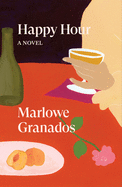
| Publisher: | Verso Fiction | |
| Genre: | Friendship, City Life, Coming of Age, Fiction | |
| ISBN: | 9781839764011 | |
| Pub Date: | September 2021 | |
| Price: | $19.95 |
| Starred | Fiction |
by Marlowe Granados
Two young women vacationing in New York City immerse themselves in borrowed luxury while skewering the city's so-called sophisticates in this sharp and beguiling debut from filmmaker and critic Marlowe Granados. Granados's nuanced characterization, biting observational humor and intoxicating prose make Happy Hour a delicacy to be savored, as well as a poised takedown of New York's cultural elite.
Isa and Gala are international travelers who have just arrived in New York for the summer. Isa is Salvadorean and Pinay, and Gala is from Bosnia. Though they've made short-term living arrangements, their finances are precarious and their travel visas expired or nonexistent--technically speaking, they shouldn't be in the country at all. Rather than quibble over such details, the girls devote themselves fully to the thrills of the moment, propelled by their own whims and their search for complimentary cocktails and food. Amused by the bland pretensions of New York's young intellectual aristocracy ("They seem to find hardship fascinating--dirty hair but suspiciously straight teeth"), Isa keeps a diary detailing her encounters with them, a task she describes as "fieldwork." Her observations are joyfully acerbic, though never without depth or sensitivity.
Burning through a loose assortment of friends and acquaintances, Isa and Gala ultimately clash with each other, forcing a reexamination of their bond and an ominous confrontation with the hidden forces that move them. Granados's sparkling wit and droll humor add a sharp edge to her sumptuous descriptions of the city's decadent nightlife. The defiant vulnerability of her protagonists infuses the gleefully irreverent narrative with depth, poignancy and warmth. --Devon Ashby, sales and marketing assistant, Shelf Awareness
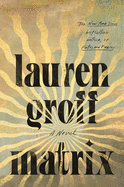
| Publisher: | Riverhead | |
| Genre: | Women, Medieval, Literary, Fiction, Historical | |
| ISBN: | 9781594634499 | |
| Pub Date: | September 2021 | |
| Price: | $28 |
| Fiction |
by Lauren Groff
Lauren Groff has built a significant career crafting novels and stories featuring sharp observations by and about modern women. In a surprising feat of time travel, the two-time National Book Award finalist (for Fates and Furies and Florida) leaps back to 12th-century England in Matrix and fictionalizes the life of Marie de France, believed to be the first woman to write poetry in French. Groff finds narrative inspiration in one of Marie's possible identities: Marie, Abbess of Shaftesbury, who was also King Henry II's half-sister. From minimal details, Groff produces a sublime examination of a woman's subversive refusal--almost a millennium ago--to be constrained by what society deemed forbidden.
In 1158, 17-year-old "poor illegitimate Marie from nowhere in Le Maine had at last been made prioress of a royal abbey." Groff's imagined Marie is a "giantess" in accomplishments, who goes on to create a scriptorium filled with literate women; elevates "the daughter of her spirit" as public bailiffess; engineers a labyrinth of secret passages for protection from outsiders; feminizes verbs and nouns in missals and psalters when she can't sleep; and dares to preside over Mass. In an environment of suffocating control under church and crown, Marie--and her "always underestimated" sisters--continuously assert themselves. Groff, like Marie, adapts her language in repeated acts of empowerment. She reclaims her title word from the Latin--mater/matr for mother, -(t)rix for feminizing--and builds her sorority with cantrix, infirmatrix, cellatrix, scrutatrix. Through Groff's glorious imagination, Marie is forever "made great... the holiest of holy women on the island, venerated and beloved." --Terry Hong, Smithsonian BookDragon
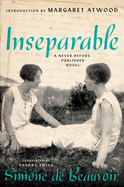
| Publisher: | Ecco | |
| Genre: | Literary, Coming of Age, Biographical, Fiction | |
| ISBN: | 9780063075047 | |
| Pub Date: | September 2021 | |
| Price: | $26.99 |
| Fiction |
by Simone de Beauvoir, trans. by Sandra Smith
Inseparable--a tender, concise and razor-sharp never-before-published novel by feminist icon Simone de Beauvoir--is a star-crossed love story of two female friends, Sylvie and Andrée. They meet as schoolgirls in post-World War I Paris, immediately becoming close friends and confidantes exploring the ever-imposing world of womanhood together. But as they grow older, Sylvie watches with concern as Andrée's passionate sensibility threatens to overwhelm her. Meanwhile, Andrée struggles to find balance between her aspirations, the expectations of her family and the machinations of men. As Andrée's zeal begins to spill into self-inflicted violence, Sylvie becomes desperate to protect her friend against herself and against a world that is determined to entrap them through their own desires.
Perfect for fans of Elena Ferrante's My Brilliant Friend, Inseparable is as intelligent and urgent as Beauvoir's philosophical and other fictional texts, yet it offers a gentler and more intimate look at the vulnerabilities of girlhood. Sylvie and Andrée's friendship is based on Beauvoir's own fervent friendship with her childhood companion Zaza Lacoin. The novel, as a result, is an aching testament to the bonds built between women and the inexpressible type of love that often goes unacknowledged. Sylvie's interior life is wonderfully portrayed in all its sensitivity and rawness, but it is Andrée's tumultuous lifestyle and desperate desire to love that makes the novel come alive with yearning and disappointment. With simple-seeming prose, a vivid and minute attention to detail and a wistfully tragic tone, Inseparable haunts readers with the promise of what could have been amidst a world as real and inescapable as Beauvoir's own. --Alice Martin, freelance writer and editor
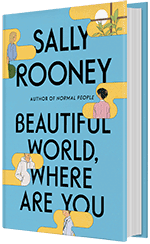
| Publisher: | Farrar, Straus and Giroux | |
| Genre: | Women, Friendship, Literary, Coming of Age, Fiction | |
| ISBN: | 9780374602604 | |
| Pub Date: | September 2021 | |
| Price: | $28 |
| Fiction |
by Sally Rooney
In Beautiful World, Where Are You, Sally Rooney (Normal People; Conversations with Friends) explores what it is to live in the 21st century--to come of age in an era of climate change and political extremism, and to long for the simple, happy things that were once considered the hallmarks of a successful life: love, a career, perhaps a house.
The four main characters in Rooney's excellent, well-realized novel are all 30-somethings, or thereabouts (millennials, though that's not a term Rooney applies to her characters, or her characters to themselves). Alice is a writer, retreated to the Irish countryside to live by the sea after publishing two successful novels and having a breakdown vaguely attributed to stress or depression or a breakup with her girlfriend or some combination of them all. In her new town, she meets a local man named Felix on Tinder; the two share a mostly unsuccessful first date before slipping into a relationship that flits between friendship and romance. Alice's longtime best friend, Eileen, lives in Dublin, where she can barely afford the rent despite her job with a literary magazine. The fourth of this magpie collection of friends is Simon, who has known Eileen since childhood, and has always had a crush on her.
"At times I think of human relationships as something soft like sand or water," says Alice to Eileen in an e-mail, "and by pouring them into particular vessels we give them shape." Rooney, in Beautiful World, Where Are You, rejects these very vessels, instead capturing the very real--and very complicated--nuances of four new adults working to build their lives both individually and as part of a larger civilization.
That civilization, though, is on the cusp of collapse, a fact that is at once a vague and fleeting idea to each of Rooney's characters and also central to their identities. "I know we agree that civilisation is presently in its decadent declining phase," Eileen writes to Alice. "The air we breathe is toxic, the water we drink is full of microplastics, and our food is contaminated by cancerous Teflon chemicals. Our quality of life is in decline, and along with it, the quality of aesthetic experience available to us."
Against the backdrop of a failing world, Eileen asks: How is one expected to live? To work and pay bills and think about sex and friendships? She posits that the "problem of the contemporary novel" is the same as the "problem of contemporary life," tending toward a "vulgar, decadent, even epistemically violent [investment of energy] in trivialities of sex and friendship when human civilisation is facing collapse."
Eileen writes this in response to Alice, herself a novelist, suggesting that to care about one thing is to cease to care about the rest: "So the novel works by suppressing the truth of the world--packing it tightly down underneath the glittering surface of the text. And we can care once again, as we do in real life, whether people break up or stay together--if, and only if, we have successfully forgotten about all the things more important than that, i.e. everything."
Beautiful World, Where Are You stands in defiance of its own characters' musings about the nature of the contemporary novel. Here is a contemporary novel that may try, on its surface, to suppress the truth of the world--that of impending climate change and political extremism and a glut of planet- and aesthetic-ruining plastics--to tell readers a story of sex and friendship (sometimes sex and sometimes friendship, and sometimes sex in friendships). But Rooney's genius is in her failure to suppress that same truth, revealing the ways it seeps into every corner of these characters' lives as they grapple with finding a balance between the very big and very real problems of this moment in time (Alice and Eileen even exchange e-mails throughout the lockdowns of 2020) and the seemingly small--yet still important--problems of everyday life.
Beautiful World, Where Are You could be considered a novel of modern technology, which it is, or a millennial story, which, given the age of its characters, it also is. But it does not fit quite so neatly into one description or another, because the search for depth and meaning in a life is universal, despite its specificity to the year(s) in which it is set. These four characters lift their phones and set them down; browse the social-media pages of ex-boyfriends and write each other long, meandering e-mails about the meaning of life; swipe right on Tinder and sleep with their childhood best friend. In Rooney's capable hands, these details of the lives of four friends are twined together without judgment, presented instead as a comment unto themselves: this is life, Beautiful World, Where Are You, seems to say. The beautiful world is right here--even when it isn't so beautiful at all. --Kerry McHugh
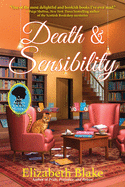
| Publisher: | Crooked Lane Books | |
| Genre: | Mystery & Detective, Amateur Sleuth, Cozy - General, Fiction, Women Sleuths | |
| ISBN: | 9781643857305 | |
| Pub Date: | August 2021 | |
| Price: | $26.99 |
| Mystery & Thriller |
by Elizabeth Blake
Elizabeth Blake has written a frothy Austen-esque mystery in Death and Sensibility--full of nosy characters, handsome gentlemen and, of course, a fancy dress ball. Blake has created a world full of Austen-loving busybodies that will keep readers entertained.
Erin Coleridge, owner of a small Yorkshire bookshop (which featured in Pride, Prejudice and Poison, the first book in Blake's Jane Austen Society Mystery series), is helping her chapter of the Jane Austen Society host a conference at a fancy hotel in York. She and her friend Farnsworth Appleby arrive at the conference excited for exquisite food and lots of Austen-quoting, only to be shocked when the conference's keynote speaker, Barry Wolf, falls dead of an apparent heart attack. Erin starts snooping around, sure that the death can't be an accident, to the aggravation of handsome DI Peter Hemming. But then more people start dying, and Erin realizes something is seriously awry. Farnsworth and DI Hemming may not agree with her about who the killer is--Barry's enraged ex-wife? The much younger current wife? The bratty son? The disgruntled coworker?--but everyone realizes there's a murderer on the loose.
Cute and cozy, Death and Sensibility is perfect for Austen lovers or fans of Stephanie Barron or Julia Buckley. With a full complement of zany side characters, and with liberal Austen quotes sprinkled throughout, Death and Sensibility pays homage to the style of the famous author. --Jessica Howard, bookseller at Bookmans, Flagstaff
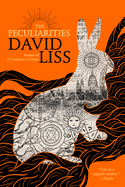
| Publisher: | Tachyon | |
| Genre: | Fantasy, General, Fiction, Historical, Alternative History | |
| ISBN: | 9781616963583 | |
| Pub Date: | September 2021 | |
| Price: | $17.95 |
| Science Fiction & Fantasy |
by David Liss
An outbreak of supernatural events in late Victorian London is comedic and lightly creepy in The Peculiarities by David Liss (The Twelth Enchantment).
Thomas Thresher has enough mundane problems to worry about. His brother may be sabotaging the family bank, at which Thomas is only a junior clerk, and is also pressuring him to get married for unexplained business reasons to a woman in whom he has no interest. More absurdly, he has also started sprouting leaves. The London Fog was always dangerous, but lately it brings "Peculiarities" in the form of transformations, women giving birth to rabbits, and attackers who seem not of this world. When Thomas discovers a curious letter in the bank's records relating to the death of a childhood friend, he realizes the strange operations of the bank and the peculiarities may be related. To find out, he will have to make surprising allies and become a student in one of London's occult societies.
In spite of the disturbing and at times violent threats both to the characters and the world as we know it, the tone of The Peculiarities throughout can be best described as charming. It bears a stronger resemblance to the Regency-set fantasy The Twelfth Enchantment than to Liss's rougher-edged Benjamin Weaver series and other connected thrillers. It is the Halloween equivalent of a beach read, leaving readers more delighted than horrified, even in the face of horrific events along the way. Any fan of both light historical adventure and weird fiction will be delighted by the combination. --Kristen Allen-Vogel, information services librarian at Dayton Metro Library

| Publisher: | Putnam | |
| Genre: | Romantic Comedy, Romance, Contemporary, Multicultural & Interracial, Fiction | |
| ISBN: | 9780593328712 | |
| Pub Date: | September 2021 | |
| Price: | $16 |
| Romance |
by Lillie Vale
The Shaadi Set-Up by Lillie Vale features young star-crossed ex-lovers who stubbornly resist each other's charms while everyone around them--their families and a popular Indian matrimonial website's sophisticated algorithm included--wishes they would just figure it out already.
Rita is a talented antique furniture restorer with a vivacious personality and two adorable sidekicks, a French bulldog named Freddie and a Jack Russell terrier mix named Harrie. The love of her life, Milan, broke up with her a few years ago. But Rita is doing a pretty good job of moving on; she's in a relationship with her handsome Tinder date, Neil, and likes everything about him, except for his maddening habit of talking with his mother as he gets ready for work every morning.
Maternal characters loom large and bring refreshing comic relief to The Shaadi Set-Up, including Rita's and Milan's moms, best friends who hatch a plot to get their children back together. Rita has a good eye for interior design, and Milan is a successful realtor with a listing that just won't sell. Initially horrified when Milan shows up at her family home (thanks to some devious planning on her mother's part), Rita ultimately agrees to help him, but the last thing she wants is to fall in love with Milan again.
The Shaadi Set-Up is YA author Vale's first novel for adults (after Small Town Hearts). Entertaining throughout, Vale's delightful storytelling will charm readers with mouth-watering depictions of Rita's favorite meals, hilarious antics by Freddie and Harrie and the delicious drama that unfolds as Rita and Milan find their way back to each other. --Shahina Piyarali, reviewer

| Publisher: | Mariner Books | |
| Genre: | Chemistry, Cooking, Special Appliances, Science, Quick & Easy, Methods, Cooking for Kids, Physical & Theoretical | |
| ISBN: | 9780358434719 | |
| Pub Date: | September 2021 | |
| Price: | $18.99 |
| Food & Wine |
by Jenna Helwig
The more than 100 recipes in Jenna Helwig's Bare Minimum Dinners are centered around the concept of "doing less in the kitchen," but that doesn't mean they sacrifice flavor or creativity in the name of simplicity. Instead, Helwig arranges the dishes here to maximize available resources, like prep time, clean-up time or limited ingredients, to best effect.
Helwig, food director at Real Simple, admits that she has spent her career up to now encouraging people to do more in the kitchen, "all for the goal of serving delicious, healthy-ish homemade meals most nights of the week." Batched freezer meals, weekly food prep, well-stocked pantries: all were fair game in her encouragement of home-cooked meals. But recognizing that it is often time that stands in the way of even these meal ideas, she began to rethink the way she framed her recipes, finding ways to achieve the same end result--healthy, home-cooked meals--with less effort and less time. Bare Minimum Dinners features meals that can be started and served in 30 minutes or less: Lamb Pita Pizzas and Moroccan Tacos; dishes that require minimal ingredients, like Baked Rigatoni, or minimal clean-up, like Za'atar Roast Chicken; make-ahead meals for the Instant Pot or crockpot; and side ideas featuring grains and vegetables. While little here is revolutionary in terms of flavor or concept, Bare Minimum Dinners stands out in its invitation to busy home cooks to spend less time in the kitchen; Helwig even includes recommended shortcuts to make her recipes even faster when necessary. The result is a beautiful and inspiring collection of meals that will appeal to any home cook looking for easy dinner ideas--ideal for weeknights and on-the-go households. --Kerry McHugh, blogger at Entomology of a Bookworm
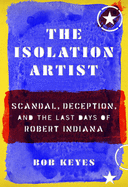
| Publisher: | David R. Godine | |
| Genre: | Biography & Autobiography, Art, Business Aspects, Artists, Architects, Photographers, History, Sculpture & Installation, Public Art, True Crime, White Collar Crime, Con Artists, Hoaxes & Deceptions, Popular Culture, Contemporary (1945- ), LGBTQ+ | |
| ISBN: | 9781567926897 | |
| Pub Date: | September 2021 | |
| Price: | $21.95 |
| Biography & Memoir |
by Bob Keyes
Although he was famous for his stacked-letters sculpture LOVE (1965), Robert Indiana (1928-2018) sure didn't radiate or generate much of the emotion. He was inclined to abruptly fire people, not show up when he was supposed to and cancel plans (including with President Obama); he was also arrested for (and acquitted of) soliciting minors for sex in 1990. But Indiana's moral failings weren't behind the mess that became of his estate during the final years of his life, as Maine journalist Bob Keyes documents in The Isolation Artist: Scandal, Deception, and the Last Days of Robert Indiana, a spellbinding cautionary tale about the tricky business of mixing art with commerce.
Keyes approaches his first book with a scholar's attention to detail and a muckraker's doggedness. He interviewed not only Indiana, who took his surname from his home state and spent the latter half of his life on a small island off the coast of Maine, but a good chunk of the book's cast of characters, a curiously large number of whom had checkered pasts when they met the artist or would go on to create problematic futures for themselves. The Isolation Artist's most intriguing personalities figure in the litigation-generating grudge match between Indiana's art publisher, who was accused of fabricating and then selling work attributed to the artist, and his agent, who consulted for a company that was accused of underpaying Indiana. Nevertheless, Indiana died with $5 million in the bank. As the song says, all you need is LOVE. --Nell Beram, author and freelance writer
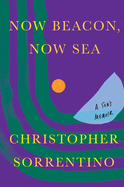
| Publisher: | Catapult | |
| Genre: | Biography & Autobiography, Family & Relationships, Literary Figures, Death, Grief, Bereavement, Personal Memoirs | |
| ISBN: | 9781646220427 | |
| Pub Date: | September 2021 | |
| Price: | $26 |
| Biography & Memoir |
by Christopher Sorrentino
As bohemian childhoods go, Christopher Sorrentino's sounds pretty dreamy. In Now Beacon, Now Sea: A Son's Memoir, he reports that in 1970, when he was in the first grade, he and his parents moved into a Greenwich Village subsidized housing complex for artists. His father was the novelist and poet Gilbert Sorrentino, and young Sorrentino got to chat with Mark Rothko at a New Year's party. But Sorrentino's mother, Victoria, was a barricade between him and a happy childhood, likely a response to her own unhappy adulthood.
In his sagacious and heartbreaking memoir, Sorrentino offers a survey of Victoria's lifelong discontent, which manifested itself as social isolation and rage against everyone she knew. Her cruelties, which met little to no resistance from Sorrentino's father, could be physical, as when she gave her son a bloody nose when he caught her making a mistake, but she was more likely to wound internally, as when she discouraged her son's artistic ambitions (he would go on to write the celebrated novel Trance, among others).
With neither vengefulness nor varnish, Sorrentino has written a stupendous exploratory work with perhaps a single blind spot. His mom complained about the one job she held during his childhood, when the family was briefly in a tight financial spot, but readers may wonder if Victoria, who always had a book at hand and never met a piece of paper that she didn't festoon with a list or a schedule, might have found fulfillment in a career--something that her generation of women had been discouraged from pursuing, much less admitting that they wanted. --Nell Beram, author and freelance writer

| Publisher: | Other Press | |
| Genre: | Middle East, Biography & Autobiography, Personal Memoirs, General, History, Disasters & Disaster Relief, Social Science | |
| ISBN: | 9781635421781 | |
| Pub Date: | August 2021 | |
| Price: | $14.99 |
| Starred | History |
by Charif Majdalani, trans. by Ruth Diver
The agonizing tailspin of a once-vibrant Middle Eastern city is depicted in real time in Beirut 2020: Diary of the Collapse by author Charif Majdalani (Moving the Palace). Starting in the summer of 2020, the diary is Majdalani's attempt to cope with his beloved Lebanon's collapsing infrastructure and economy. In 75 brief entries, Majdalani ruminates on the promising, yet troubled, history of his homeland and its once glitzy capital, Beirut.
Lebanon, he says, was for many years "a nation straddling the great cultures of the East and the West, a crossroads, a herald of coexistence, openness, cultural exchange and integration." Majdalani then contrasts its past to the jarring realities of the present, one dominated by a corrupt government of former warlords indifferent to a struggling economy further eviscerated by Covid-19 lockdowns. Moving from poignant interactions with restaurant goers and repairmen that put a human face on the tragedy of Lebanon's fall from greatness, Majdalani's account is incisive and fearless in apportioning the blame to the inept "oligarchy in power." But it is the moment of 6:07 p.m. on August 4, 2020, that Majdalani becomes a literal part of the collapse he chronicles: 2,750 tons of ammonium nitrate in the port of Beirut explodes and he feels the floor "come and go beneath me like an old swing," likening the aftermath to "a city that had been bombed for hours and hours." Majdalani's elegant prose elevates this compelling, ultimately devastating account of an unthinkable tragedy. --Peggy Kurkowski, book reviewer and copywriter in Denver
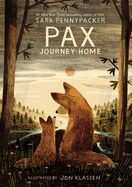
| Publisher: | Balzer + Bray | |
| Genre: | Friendship, Orphans & Foster Homes, Animals, Foxes, General, Family, Science & Nature, Social Themes, Juvenile Fiction | |
| ISBN: | 9780062930347 | |
| Pub Date: | September 2021 | |
| Price: | $17.99 |
| Starred | Children's & Young Adult |
by Sara Pennypacker, illust. by Jon Klassen
Peter returns to the woods on a journey of longing and forgiveness that brings closure to both the boy and his beloved fox friend in Sara Pennypacker and Jon Klassen's earnest and wrenching companion novel Pax, Journey Home.
In the aftermath of the acclaimed Pax, Peter is nearly 14. He is both scarred by the conflict that killed his father and heavy with shame after releasing his pet fox into the wilderness. Peter has lost all he can bear and builds emotional barriers hewn as tightly as the boards of wood he laid for his new cabin. Peter builds it, then abandons his plans to inhabit it. Pax, meanwhile, has settled at Deserted Farm, where he holds close memories of his time with the human he trusted. Peter and Pax set out on individual missions of penance and purpose; when their paths intersect, each makes critical decisions that prove to be the salvation of the other.
By again alternating chapters between her protagonists, Pennypacker's lyrical, deliberate language weaves a powerful sense of place, and her short chapters and Whitmanesque tone are descriptive but never florid. Without quotation marks or anthropomorphization, Pennypacker uses clipped speech and italics to convey the fox's thoughts. Caldecott winner Klassen's (The Rock from the Sky) illustrations appear every few chapters, a mix of spot art and full-page sketches to offer visual context. Klassen's sketches are smoky and dappled snapshots in time, and the artwork's gray scale and saturated blacks lend additional texture to the story. Some war wounds have healed in Pax, Journey Home, but aching loss persists for both the land and its inhabitants. This tender story of love and reconciliation, and of families made and chosen, promises comfort after unfathomable hurt. --Kit Ballenger, youth librarian, Help Your Shelf
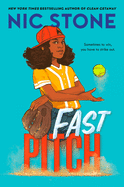
| Publisher: | Crown Books for Young Readers | |
| Genre: | United States - African American & Black, People & Places, Mysteries & Detective Stories, Family, Social Themes, Juvenile Fiction, Prejudice & Racism, Multigenerational | |
| ISBN: | 9781984893017 | |
| Pub Date: | August 2021 | |
| Price: | $17.99 |
| Children's & Young Adult |
by Nic Stone
Nic Stone's sophomore middle-grade title, Fast Pitch, is an irresistibly charming novel featuring a 12-year-old who works hard to clear her great-grandfather's name while also taking her softball team to victory.
Shenice Lockwood comes from a long line of baseball players. Her father, Vic, used to play before a knee injury in college, and so did his father, PopPop, and his father before him, the family's "baseball patriarch," Great-Grampy Jon-Jon, who played in the Negro American League. It comes as no surprise that Shenice (aka Lightning Lockwood) is the captain of Georgia's Fulton Firebirds softball team. The Firebirds are the first and only all-Black team in the Dixie Youth Softball Association--in fact, they're "the only team in the entire DYSA with more than three Black players on the roster." The state championship is coming up and Shenice needs to focus all her energy on winning. But then Uncle Jack, Great-Grampy Jon-Jon's younger brother, tells Shenice that Jon-Jon could've been one of the first Black players in the MLB if he hadn't been framed for theft; Shenice determines to find the truth. Will Shenice be able to keep her head in the game and bring her team a win or will her detective efforts cause her to strike out?
Broken up into short chapters with accessible language for younger readers, this inspiring and funny novel is a quick and easy read that will keep readers eager to learn what happens next. Stone (Dear Martin; Clean Getaway) allows young Black girls to see themselves excel at playing sports and also focuses on determination and standing up for what's right. --Natasha Harris, freelance reviewer